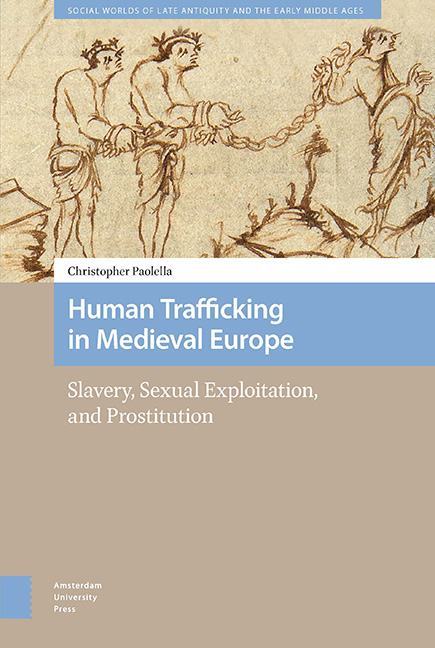5 - The Late Medieval Sex Trade
Published online by Cambridge University Press: 21 November 2020
Summary
Over the course of the twelfth and thirteenth centuries, medieval Western Europe to the north of the Alps and Pyrenees experienced widespread socioeconomic changes that included urban revitalization and an expansion of the monetary economy. These changes encouraged the growth of commercial sex, which developed over the course of the thirteenth century to the point that its socioeconomic structures (brothels, bath-houses or ‘stewes,’ prostitution rings, etc.) began to be formally addressed by royal, ecclesiastical, and municipal authorities: at this point, we may now speak properly of a growing commercial sex industry. The growth of that industry would in turn create a new source of demand for labor that human traffickers were willing and able to supply.
Movement in late medieval Western European sex trafficking networks tended to be regional or local in terms of the cultural and geographical distances traversed, for example, from Valenciennes to Dijon or from Hertfordshire to London, or among and within the streets of London and Paris. Again, we must remember that trafficking is, at its heart, an exchange. As such, movement – whether across thousands of miles from China to Italy or across a narrow lane from the open space of the streets to the enclosed spaces of homes, inns, and taverns – serves to facilitate that exchange.
There were numerous points of entry into the sex trafficking webs of late medieval Europe, including familial pressure, abduction, and predatory employment. The stories of the victims, therefore, vary among individuals. Yet, common patterns emerge from the records preserved in archives across France and England: economic duress, for example, placed women and girls in precarious circumstances that human traffickers readily exploited; stiff competition for employment in industries such as food service and hospitality, laundering and embellishing, and domestic service meant that poor women and girls had few options available to them if they fell into the hands of a predatory employer.
As we turn our attention to medieval sex trafficking, we will also reconnect with Joy and Anne, and we will meet Kris and learn about her experiences in Chicago. Whether in the medieval or modern world, once a victim entered the commercial sex industry, violence kept her there, and escape was difficult although not impossible.
- Type
- Chapter
- Information
- Human Trafficking in Medieval EuropeSlavery, Sexual Exploitation, and Prostitution, pp. 215 - 246Publisher: Amsterdam University PressPrint publication year: 2020



